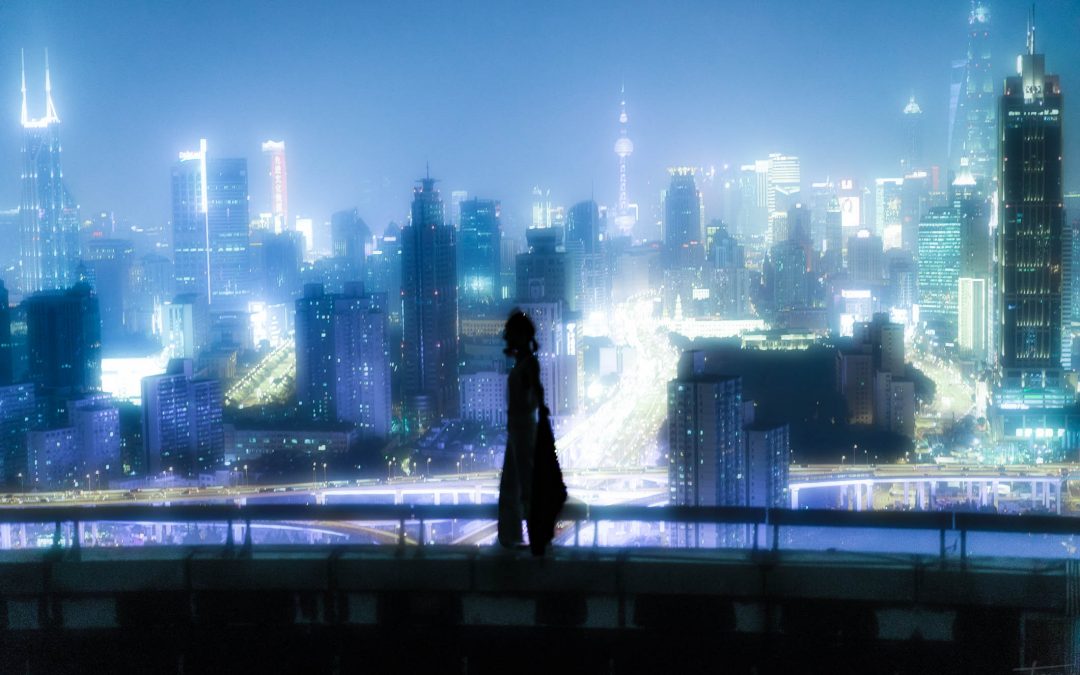2018 has been my most productive year in photography so far, this year I shot more than ever before and came to a couple of realizations that really helped bring my work to the next level. Whether or not I’m any good is debatable, but I’m certainly much better than a year ago, and much more conscious of factors that make an image good – before this year, I used to mostly shoot with intuition, but this year I became a lot more analytical in my thinking. Here are a few key realizations that helped me get there. Some of these may be obvious, as they are all things that make sense once you internalize them, but if you don’t really think about them, they may be easy to overlook.
A story makes a photo much more meaningful
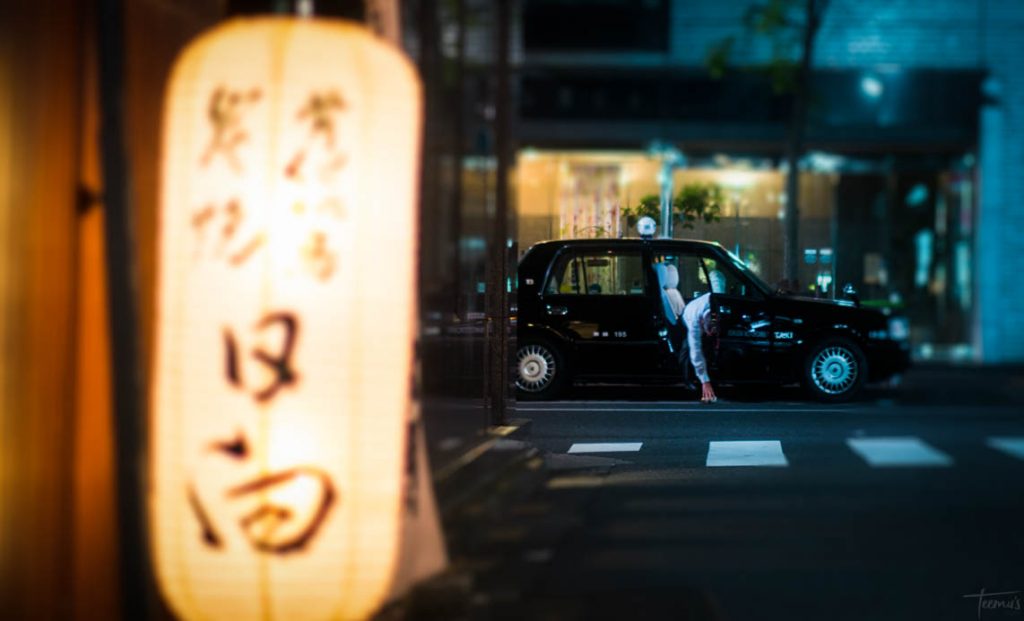
Shibashi is an interesting place
I used to think only “aesthetics” mattered. Perhaps because I started with landscape photography and Instagram, so there wasn’t much potential for a story to begin with. It was, “Here’s a sunset that looks sick”. If you add a story to that, there’s a high chance you’ll just come across as a poser. You know those English teachers who read a book or watch a movie, then give meaning to every little gesture that the main character makes, no matter how random or insignificant, then act like the director intended that random gesture have some super deep meaning? And they act like you have to be super posh and sophisticated to understand that, making them come across as kind of elitist airheads? I wanted to avoid becoming like that English teacher. I didn’t want to assign some ridiculous deep meaning to a photo of a cityscape at 6:30 PM. And this attitude carried over when I started shooting streets.
But then I took a few photos that seemed to have a story built into them, pretty much by accident. The first one was this Tokyo Ginza Line metro photo that I’ve talked about a few times on this blog already. When I posted the photo, it created a lot of discussion on Instagram. For a good reason I think, it’s not just aesthetically pleasing, but there’s something intriguing going on in the photo as well, that is both interesting and obvious at first glance. But I was so caught up in thinking only looks mattered that I didn’t even notice this photo when I first took it, almost discarding it. But now, it’s one of my favorite images that I’ve ever shot. It really was a lucky shot, I only took 5 photos of the train, and only because I thought the color looked nice. But since this realization, I’ve come to think that a good photographer always looks for a story to add to their photos.
Another way to tell a story with photos is by shooting a gallery or a series, instead of just individual images that look nice on their own. I used to be too social media focused, focused too much on the main shot, that I forgot to record some interesting detail shots that would work compliment the main shots, telling a more complete story. I actually only realised this when I started shooting video. Because in video, you can’t just take A-roll, B-roll is also essential to tell a full story.
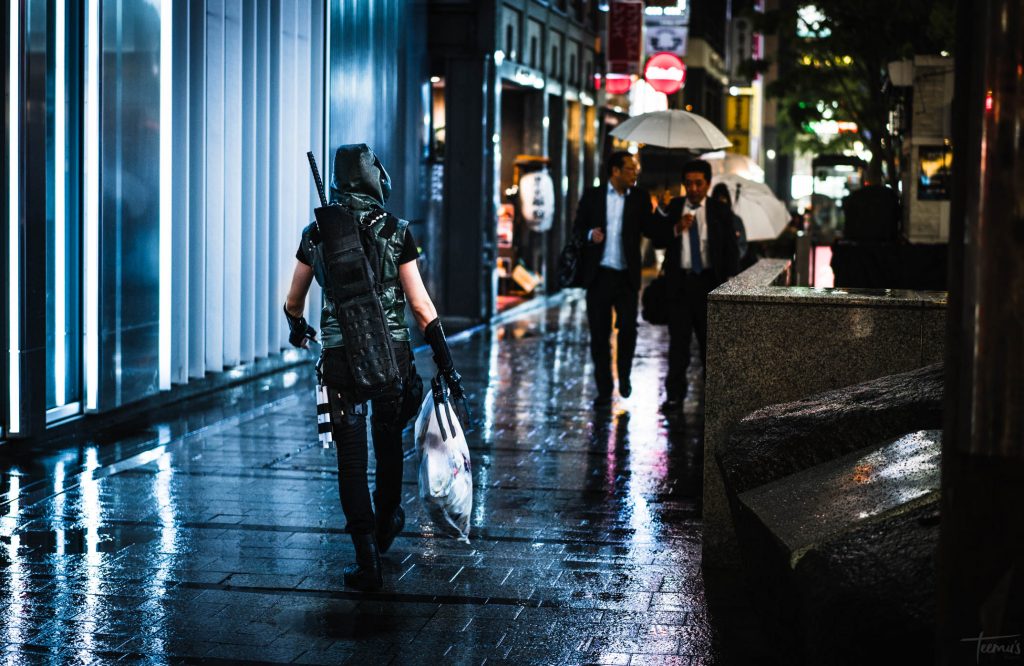
Not all heroes wear costumes, but this guy does
Daytime is just overexposed nighttime – only light matters
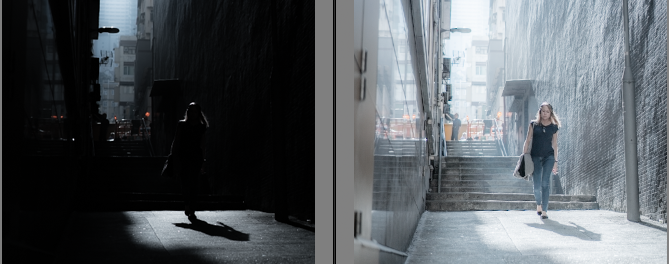
Underexposed vs reality
Most of the photos I like to take are dark. During the night, I gravitate towards shooting interesting scenes created by artificial lighting setups, one reason why I like neon so much. Darkness speaks to me, I never liked daytime too much. It’s too bright and boring, and not nearly depressing enough!
But actually, the only real difference between day and night is the amount of light available. The good thing is, you can adjust the exposure of a scene with a camera and/or software. So if you underexpose daytime photos, they become dark. It’s an extremely obvious realization on it’s own, but just randomly shooting underexposed daytime photos doesn’t really work. The reason it doesn’t work is that there isn’t as much artificial light available during the daytime, so if you simply shoot underexposed images, they are very boring most of the time. Especially during overcast or rainy days. Even if there are good lighting setups, they are harder to spot when everything is so bright. I only started to get good daytime images when I started paying close attention to both the sun and available artificial lighting setups, scanning the environment for things such as backlight, streetlights, brake lights, neon signs that turn on early. Then I adjusted my thinking to consider what photos would look like if they were selectively underexposed by about 2 stops of light.
I still prefer nighttime, but this realization has made me understand light a lot better. Looking at some other street photographers work, even such as the legendary Fan Ho, it’s obvious there’s people who have thought of this a long time ago already – I wish someone would have explained it to me earlier!

Which one do you prefer?
Opposites attract
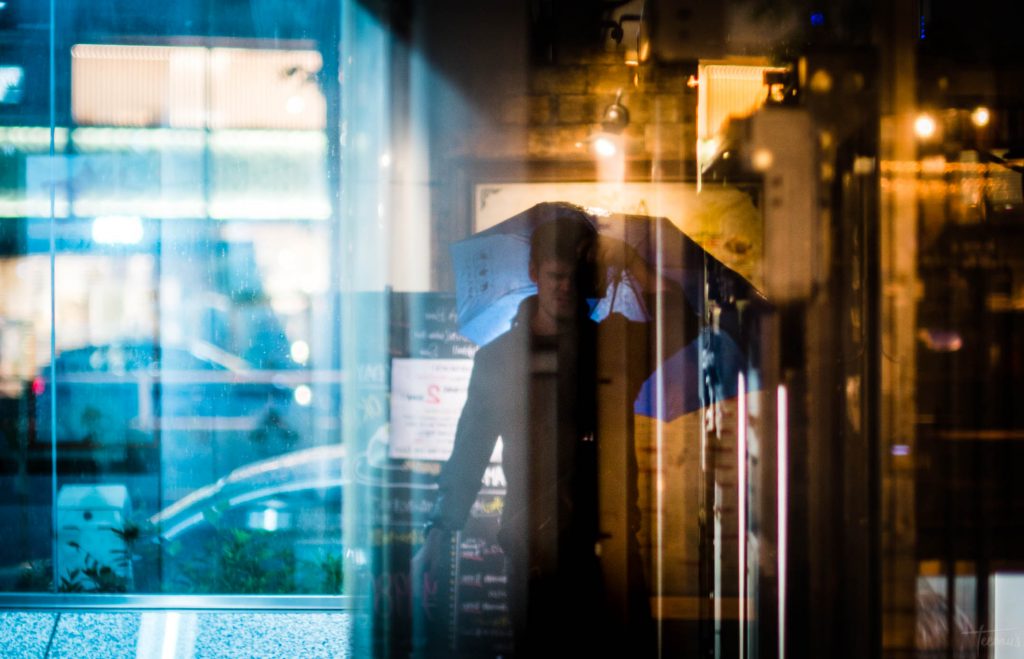
The earliest and probably the most obvious realization of the year was to pay closer attention to colors when shooting photos. More specifically, opposite colors. I like to shoot at night and edit a colder color later, so my images have a blue tint. The opposite of cold is warm, and the opposite of blue is orange or yellow. Therefore, I switched my AWB setting to manually cold white balance, sometimes in my camera or sometimes just in my brain, and simply started to look for yellow/orange/red lights more consciously. Doing this more consciously has helped me take better looking photos more consistently.
Somehow, I never fully realized this simple rule, even though they teach it to 3rd graders in art class – but I was just shooting intuitively, wondering why sometimes my photos worked and sometimes didn’t. After I realized this, I started seeing blue and orange everywhere, and it started to make more sense why suddenly a lot more instagram photographers were shooting with that light saber video light stick in every image – it is a really easy “hack” to add whatever opposite color to your images.
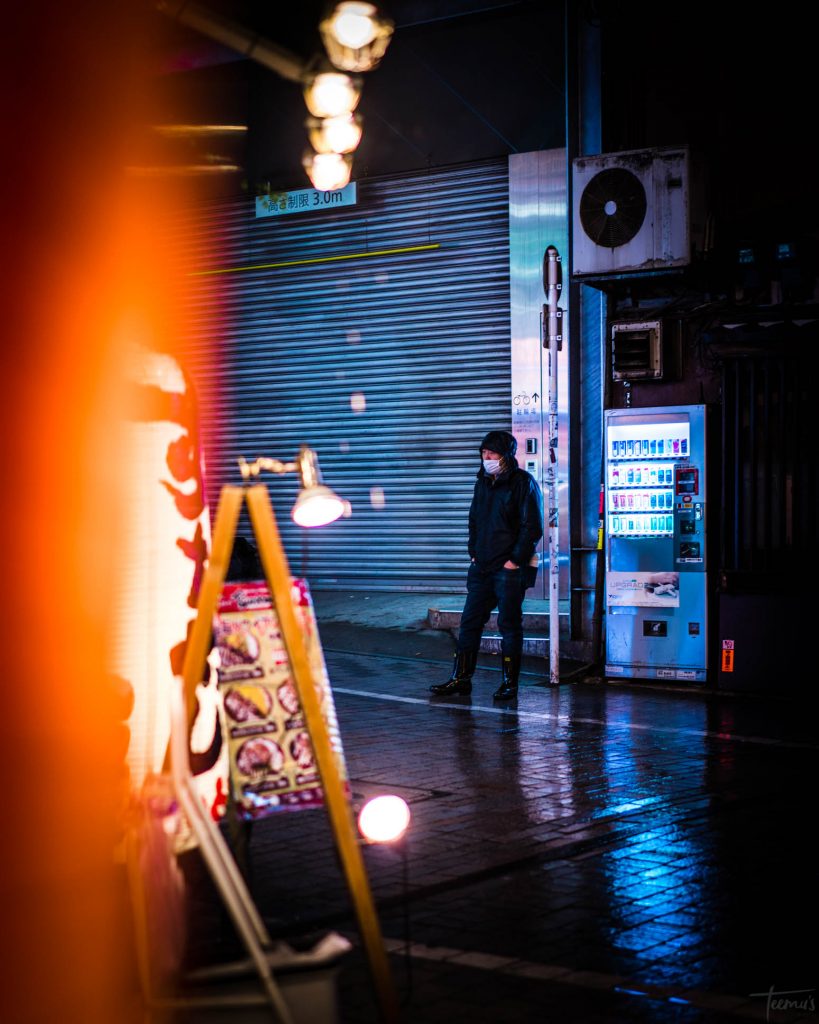
Orange lantern. Probably the most on-the-nose example I could find, just to illustrate the point.
The difference between an instagrammer and a photographer
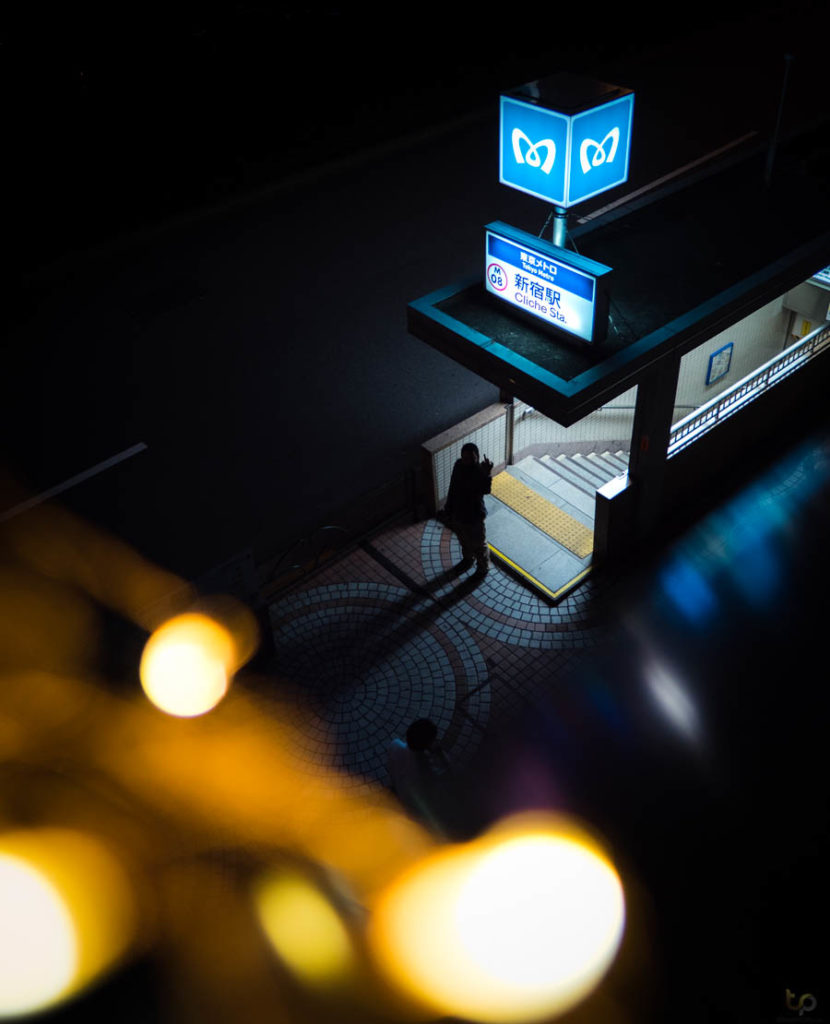
Cliche Station, Tokyo. Have you ever seen this unique composition?
As I started following more people on IG, I started noticing the same photos popping up on my feed more and more often. In some ways I was always aware that a lot of people go to common Instagram spots, taking the same photo with the same edit, and that’s maybe a bit boring but fine and we all do it occasionally. After all, it’s hard to take an unique photo of the Eiffel Tower or The Victoria Peak. But I never realized the extend people would go to until earlier this year. Not only are people constantly copying street photography, whenever someone has an unique idea or concept or edit that sometimes doesn’t even exist in real life, that will also get mercilessly copied almost instantly. I felt a bit cheated when I realized that people I used to look up to were basically frauds, creating nothing original of their own, just recycling other people’s work in an attempt to chase fame. And on an another level, a lot of so called “street photographers” on Instagram are doing nothing but recreating other people’s photos and angles, over and over again, without ever even attempting to take their own photos or shoot their own concepts. But unless you follow a lot of different photographers, it will be difficult to spot this practice, so most normal people who aren’t as obsessed with photography will never know the difference.
The good news is that most people who can’t create any original content will never really get anywhere, because being a mediocre copy artist is an oversaturated niche. Then these same people will complain about the algorithm, wondering why their reach is down and why they’re not growing anymore. I guess the lesson here is, it’s fine to learn by recreating stuff, but do not become one of these guys who have been shooting for 2+ years and still aren’t even trying to do anything of their own. It’s a shortcut that eventually leads nowhere. The algorithm is fine, it tends to reward people who are doing good, orignal high quality work on a consistent basis.
Although I’d like to clarify that the Instagram algorithm doesn’t always reward quality content alone – one has to know how to present it and how to work together with the algorithm. I am currently working on writing a longer guide or perhaps a video that explains this in depth. (let me know if there’s interest for this?) Some of my favorite photographers who are insanely talented don’t have many followers at all, and some public toilet spammers have tens of thousands. The difference is usually in their marketing abilities and understanding the algorithm. My point above is simply that if you’re not actually doing anything worthwhile, it may first be a good idea to perform a reality check – if your work isn’t even original, there is no reason it should go viral. It certainly isn’t the algorithms fault. I’m not even saying you can’t ever go to a common spot to take a photo. I’m only saying, if 90% of your feed is recycled stuff, something is probably wrong.
Calibrate your screen… (Oops)
In order to share your vision with the world, you first have to have a properly color calibrated screen. Screen calibration is not talked about as often as it should, at least not among my circle of friends who are mostly self-taught photographers.
I only had 2 screens for the longest time, and I knew my laptop’s screen wasn’t perfect in terms of color, so I relied on my Samsung phone for final touches of color correction. BIG MISTAKE. Turns out there is a “boosted” color profile active on all Samsung phones by default, which is oversaturated and contrasty. Which means that all of the time that I thought I was doing great color correction, my photos only looked as I intended when viewed from a Samsung screen. For everyone else, they looked different from what I intended. So my real vision was never actually shared. I’d begun to doubt my own sense, because whenever I was very happy with an edit, it wouldn’t usually get a good reaction when I shared the picture. It may have been a coincidence, but my photos started gaining a lot more popularity around the time I’d corrected my screen color.
The thought that I may have had an incorrectly calibrated phone screen didn’t even enter my mind before I bought a mac and realized all my photos looked different on all of my 3 different devices.
Apple products tend to have the best color profiles active by default. On Samsung, the best color profile to use is “Basic”. But if you want to take color calibration a step further, you can order a device such as the Spyder5, which I got from Amazon (affiliate link). This device analyzes the color of your computer screen, then uses software to calibrate the most accurate color profile possible. It works fine even on my laptop, which doesn’t have any other way to adjust the screen settings, even for things like contrast.
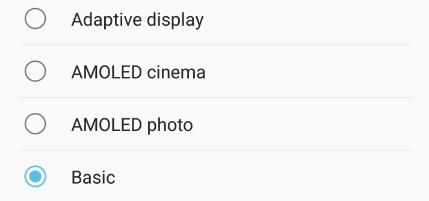
Be Humble, but not too humble
It’s good and healthy to listen to all comments and feedback… up till a point. The more mainstream audiences you reach, the more feedback you are going to start getting. For some reason, social media channels like IG are echo chambers of only positive comments, but that doesn’t extend to Reddit and some other online communities. This can be a good and a bad thing. If you have an image that gets a lot of attention, it’s a good idea to take all feedback with a grain of salt. The old rule, “only take advice from those you’d be comfortable trading places with” applies. If someone who’s work you respect gives you criticism, listen with full attention and really consider their words. But if some random guy on Reddit gives you advice, say thanks and move on. This applies both to negative and positive comments – I often hear things that are well intentioned, but I know that they are also flat out wrong. Don’t make the mistake of being too humble, as becoming a great photographer means you will have to be able to trust your own intuition to create something that’s worth creating.
Sometimes LDR is better than HDR
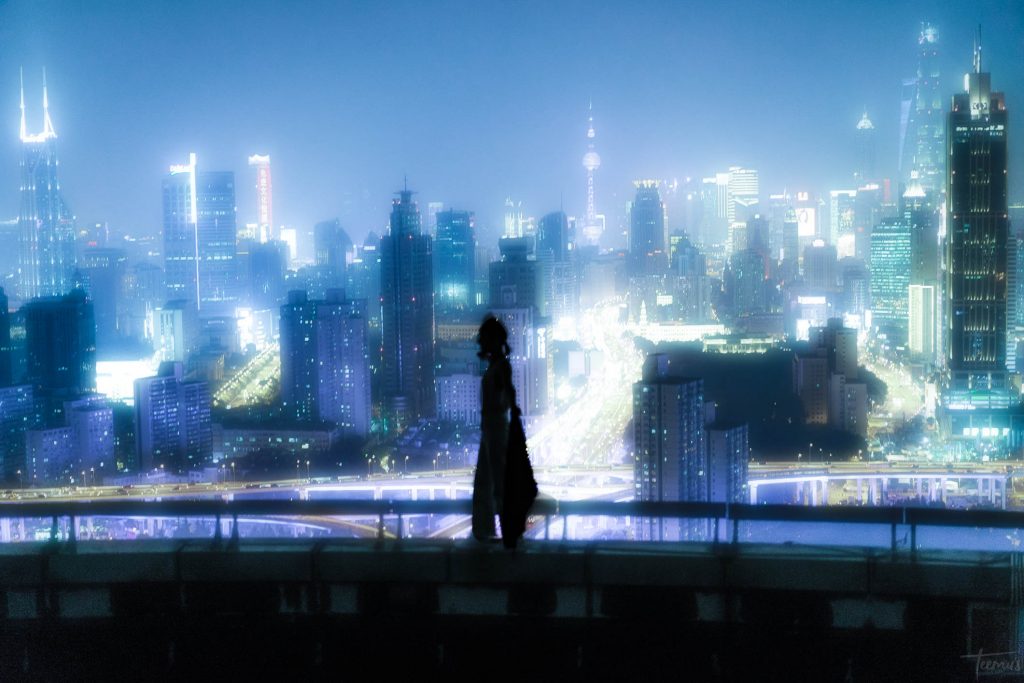
In my opinion, this photo wouldn’t really work if the shadows were fully exposed and highlights were down.
LDR being Low Dynamic Range, not Long Distance Relationship, which always sucks.
One day I was browsing 500px and saw a photo posted by one of my favorite photographers, Blackstation. He posted a photo with blown out highlights in the middle, which was obviously done on purpose, but then some “expert” was sharing advice on the comments section, condescendingly giving advice on how to keep highlights from being blow out, as if Blackstation wasn’t aware of this to begin with. But this comment also made me realize that a lot of my favorite photographers actually use blown out highlights and dark shadows to create a more minimal effect. Which is kind of the opposite of what a lot of beginner photographers do once they discover the power of RAW files and HDR, myself included. I wouldn’t advise to shoot blown out or underexposed, but going that way in the edits sometimes works quite well. At least for my style of photography.
Thanks for reading! I haven’t written a post of this type in a while, so I would love to hear your comments below. If you’re new to my blog, you can browse more stuff here. I’m also quite active on Instagram and Twitter, don’t be afraid to say hi!
